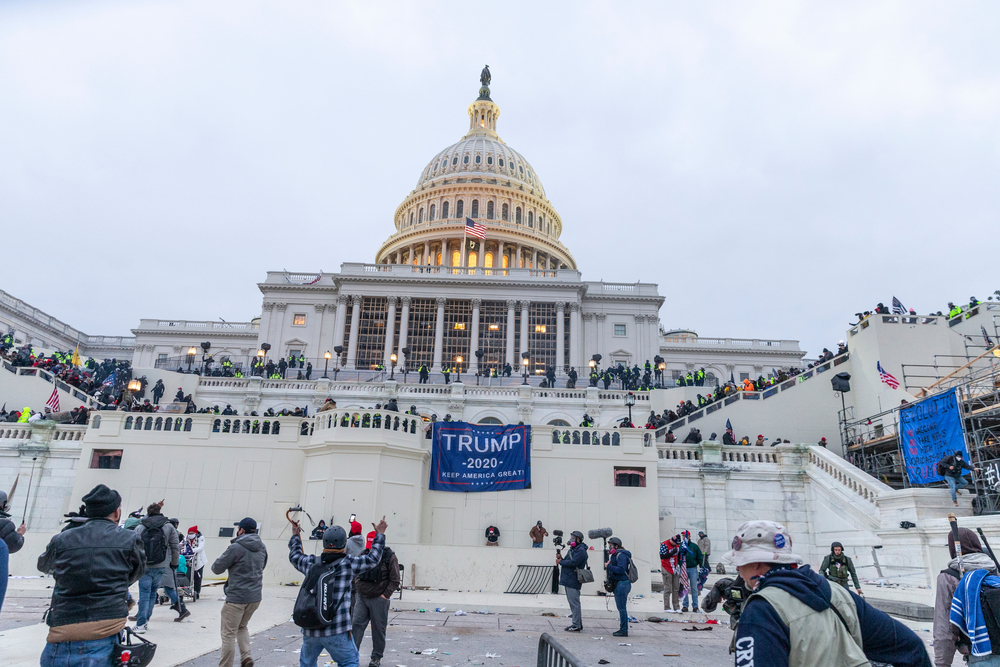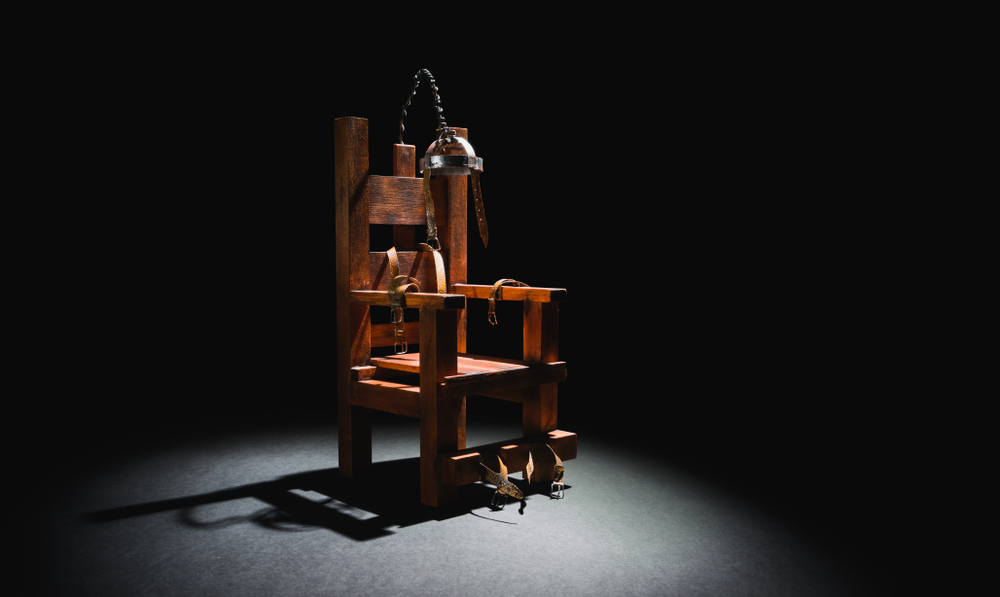Report: School police do not keep students safer
Posting armed police in public schools does not make schools safer, concludes a recent study.

The Cost of School Policing; What Florida’s students have paid for a pretense of security, focuses on Florida schools, which are required by state law to have armed officers on all campuses, even elementary schools.
“In an effort to protect students, Florida enacted a law that increased students’ chances of being arrested at school,” the report states, citing the case of a 5-year-old who was arrested and handcuffed despite the child’s pleas for a “second chance.”
RELATED: Crime rate often dropped as coronavirus took over
RELATED: Online classes send students to court
This conclusion is magnified by supporters of the Black Lives Matter movement who protest that in-school police practices often serve to reveal racist attitudes among police and unnecessarily criminalize child and adolescent behaviors.
Why police are in our schools
Placing law enforcement officers in public schools began in the late 1950s in Flint, MI. Gradually, other states assigned school police, as well. About 22 percent of U.S. schools participated in the school policing movement by the late 1990s. In most cases, these school resource officers are employed directly by the school districts.
The use of armed law enforcement in schools continued to rapidly increase following repeated school shootings, beginning with a 1999 incident at Columbine High in Littleton, CO. There, 36 students were killed or wounded. According to a report by K12 Academics, an additional 147 students were killed in school shootings between 2000 and 2010.
Following the 2018 shooting at Marjorie Stoneman Douglas High School that killed 17 people, Florida passed a law requiring armed officers. Congress also approved spending $1 billion over a 10-year period to improve school safety.
It is important to note, however, that school shootings are not new. The first recorded school shooting happened in 1764 when four Lenape Native Americans killed a schoolmaster and up to 10 children. School shootings continued to happen throughout the 19th and 20th centuries, usually perpetrated by students.
However, amid growing financial and social pressures caused by both the economic impact of the coronavirus pandemic and the growing Black Lives Matter movement, some school boards are cutting or even eliminating school policing program budgets.
At the same time, manydistricts stress the continued need for in-school policing, pointing to a U.S. Department of Education study that reported nearly a million violent incidents and nearly a half-million non-violent incidents in the 4,803 sampled public schools during the 2017-18 school year.
Here are some of other findings of this 93-page study:
- Sixty-six percent of schools surveyed reported at least one physical attack or fight.
- There were 3,600 firearms possession cases, while other types of weapons incidents accounted for 35 percent of all disciplinary actions.
- Most bullying incidents occurred in middle school.
- Schools in urban environments reported more behavioral incidents than suburban or rural schools.
School security statistics
According to the Education Commission of the States, 43 states and the District of Columbia require schools to have a safety plan and 29 of those states require law enforcement agencies to be involved in developing those plans. Thirty states and D.C. allow school security officers to carry weapons, while 11 allow concealed carry permit holders to have weapons in schools. Nine states allow authorized school employees to carry weapons.
Even before the Parkland shooting, the school security equipment and services market totaled $2.7 billion in 2017, according to an Omdia Technology research report.
Today, 80.3 percent of public schools have either school resource officers, law enforcement officers or security personnel, according to the most recent data provided by the National Center for Education Statistics.
A 2018 study showed that at least 26 states spent about $960 million on school safety programs. The amounts spent that year ranged from $300,000 in Missouri to $400 million in Florida.
Two of Florida’s largest school systems, Miami Dade and Broward, spent $53.4 million and $50.6 million, respectively, on security in the 2019-2020 school year.
With police salaries ranging from $53,000 in New York to $39,000 in North Carolina, according to ZipRecruiter, and more than 100,000 public schools in the U.S., school districts nationwide would have to spend billions to place armed officers in all schools.
Is school policing effective?
“Research shows that the mere presence of police officers in school increases the likelihood that a student will be referred to law enforcement for adolescent behavior. School-based arrests, which fall more harshly on students of color, put students in direct contact with the justice system. Poor policing within schools therefore puts students on the fast track to the school-to-prison pipeline,” according to a Sargent Shriver National Center on Poverty Law study of the Chicago school system.
A 2018 study by ABC News revealed that more than 30,000 children under the age of 10 and an additional 240,000 children between 10 and 12 were arrested in the U.S. between 2013 and 2018.
A Texas study indicated that placing police in schools led to declines in high school graduation rates and college enrollment rates. A New York study indicated that putting more police in neighborhoods negatively affected Black male test scores.
Increasingly, school systems are torn between the desire to ensure the safety of the children and the increasing protests and politicization of policing practices. As a result, it is little wonder many districts throughout the country are beginning to question placing police in schools.
Following the police killing of George Floyd, the Minneapolis school board voted unanimously to cancel its contract. Portland, OR, schools announced in June that police will no longer be placed in the city’s schools. Meanwhile, school boards in Denver, CO, , East Lansing, MI, and Prince George’s County, MD, followed suit, cancelling police contracts.
Five national education organizations representing school resource officers, school psychologists, counselors, secondary school principals, teachers and parents joined in August to issue a call for schools to address “long-standing injustices and racial inequities” by instituting “rigorous training and appropriate use of school resource officers.”
A Newsday survey of Long Island, NY, communities shows that while most are continuing to fund school security programs, at least one has cut its spending because of revenue losses due to the impact of the coronavirus and anticipated cuts in state aid.
Elected officials in Philadelphia and Memphis, TN, this summer debated spending for police in schools amid sharply declining revenues.
According to Education Week, local Black Lives Matter protestors convinced Rochester, NY, to lay off its entire school police force. However, similar community protests in Chicago were unsuccessful in convincing the school board there to remove police from schools.
Increasingly, parents and community leaders are protesting physical tactics used by some school police.
A former North Carolina school resource officer videotaped slamming an 11-year-old boy to the floor now faces misdemeanor assault and child abuse charges, according to a CNN report. Similarly, an Arkansas school resource officer was suspended for using a chokehold on a high school student, and a Florida school resource officer was fired after he arrested two 6-year-old children.
In reaction to this growing critique of policing practices, the Fraternal Order of Police in Utah wrote a letter to the state’s school superintendent alleging anti-police bias in some Utah schools targets their own children.
Policing practices harm students, says Florida school security report
Florida’s statewide mandate that armed law enforcement be stationed at all public schools is now under attack as an overreach that is costly in dollars and is actually harming students.
“At least $383 million was spent at the state and local levels to embed police officers or security personnel in schools during the 2018-19 school year – more than twice the amount spent in 2016-17,” according to The Cost of School Policing report.
The Florida report — a joint project by the American Civil Liberties Union of Florida, Equality Florida, Florida Social Justice in Schools Project, the Southern Poverty Law Center, and The League of Women Voters of Florida — calls for the state to repeal its mandate for armed police officers in every school.
The findings and conclusions were largely based on research by University of Florida Professor F. Chris Curran into the expansion of law enforcement in Florida schools following the 2018 Parkland school shooting.
“The presence of law enforcement in schools was related to increases in the number of behavioral incidents reported to the state, the number of such incidents reported to law enforcement, and student arrests. The results suggest a need to reconsider whether law enforcement should be present in schools, and, if they are, how they can be implemented in a way that minimizes unnecessary exposure of students to law enforcement and arrests,” Curran wrote.
As a result of the state mandate, law enforcement increased 40 percent in Florida schools between 2017 and 2019. Most of that was in elementary schools which previously rarely had an on-campus armed police officer. During that same period, the number of reported behavioral incidents grew, particularly involving threats and intimidation, drugs and tobacco use.
Curran’s data shows that as more students were arrested, Black students were “grossly over-represented in school arrests.” He also found that the presence of law enforcement in schools was directly related to the up to 83 percent growth in student arrests and the increase in the number of behavioral incidents reported to school police officers.
Curran said he found “little consistent evidence” of any decrease in behavioral incidents. He said that indicated “school-based law enforcement were not necessarily making schools safer.”
He recommended school districts and the state reconsider their use of law enforcement in schools and opt instead for conflict resolution methods to reduce “implicit bias” and “disproportionate minority contact” to limit, if not prohibit, the number of arrests.
“Florida is failing to meet the emotional and mental health needs of its students … legislators have unfortunately allowed fear, and not evidence, to drive school policing policy in Florida,” The Cost of School Policing report concludes.
Here are just some of the 85-page report’s findings:
- More police officers (3,650) work in Florida schools than school nurses (2,286), school social workers (1,414) or school psychologists (1,452).
- Youth arrests in schools increased 8 percent to a five-year high in 2019 at a time that youth arrests in the community declined 12 percent.
- The number of student expulsions increased 43%.
- There were more than four times the number of students who were subjected to physical restraints.
- A 5-year old and five 6-year-olds were among 345 elementary pupils arrested and at times handcuffed.
Local schools should be allowed, according to the report, to determine how best to secure the safety of students by increasing student support staff, setting a minimum age for arrests, limiting the involvement of police and their use of force on children, establishing minimum training requirements and accountability standards for police in schools, and setting clear duties for school police focused on controlling campus access.
In addition, the report calls for codes of conduct with clear consequences and incentives to encourage positive behavior, training for teachers and police about when police involvement is appropriate, and teaching students about their rights in police encounters.
“We cannot continue asking our students to carry the weight of adult fear and inaction at a time when they are more vulnerable than ever,” the report states.

















